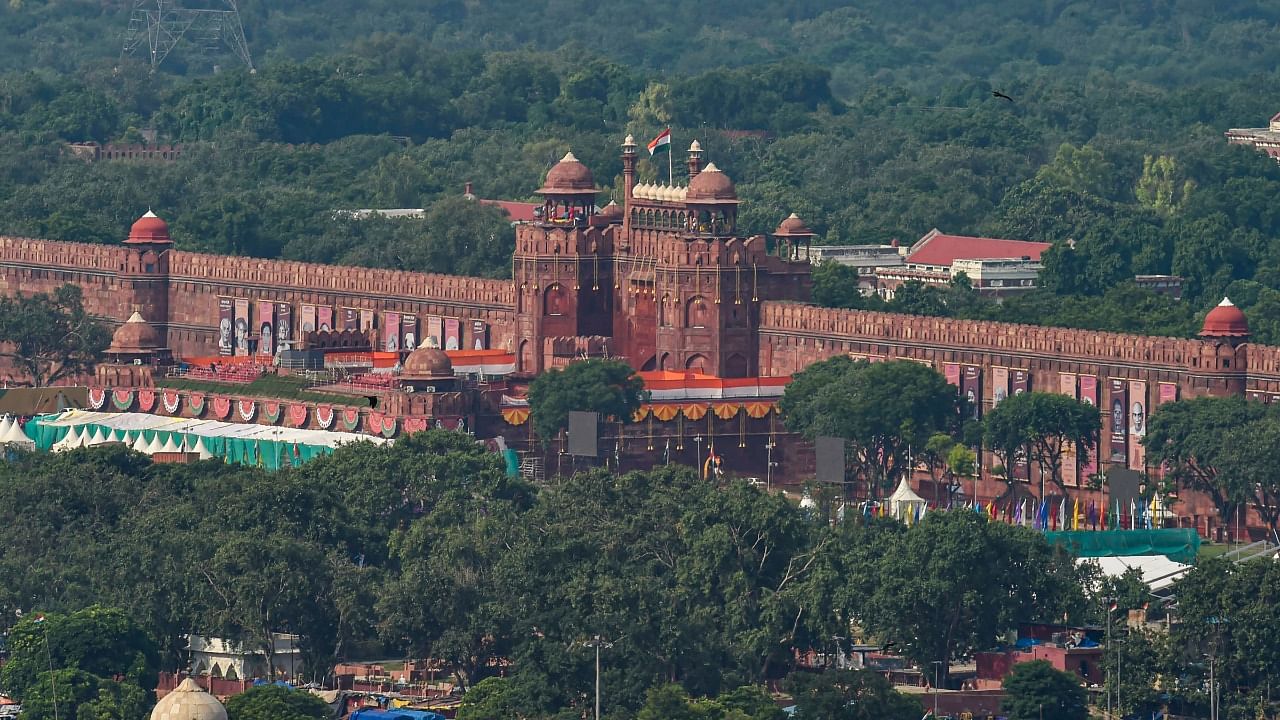
"Long years ago we made a tryst with destiny, and now the time comes when we shall redeem our pledge, not wholly or in full measure, but very substantially." Jawaharlal Nehru, India's first Prime Minister's voice echoed through the walls of the Red Fort (Lal Quila) as he delivered his speech "Tryst with Destiny".
The Indian flag rose high on the Fort's Lahore gate when Nehru urged millions of independent Indians to cooperate in furthering peace, freedom and democracy.
The Red Fort has become an icon of the freedom struggle in India. It has witnessed copious battles and bloodshed.
Also Read | Congress shares draft of Nehru's 'tryst with destiny' speech; he had written 'date with destiny'
The UNESCO declared World Heritage was built by the great Mughal emperor Shah Jahan in 1648. It took 10 years to build the fort. It was a residence for the Mughal emperor for around 200 years until the British took over. The name 'Red Fort' compliments its huge enclosing walls made with red sandstone.
Between the Mughal empire and the British, the Red fort witnessed other invasions from the Afghans and the Marathas. After Aurangazeb, the fort started slipping through the hands of the Mughals. The Persian empire defeated the Mughals and took over the seat, making it a 'Peacock throne'. Next in the line were the Afghans and the Marathas. The Afghan ruler Mohammad Shah Durrani took over the Fort, who was then replaced by the Marathas. The Marathas occupied the throne for two decades until they fought the historic Anglo-Maratha war in 1803 against the British East India Company.
Interestingly, the battle of the uprising against the British forces was also fought on the Red Fort and the last Mughal emperor Bahadur Shah ll became the symbol for the 1857 rebellion against the British. He was tried there by the Britishers.
After the British took over the fort, they unleashed their anger on the fort by destroying most of the artistic designs. They also took away the jewels and the crowns of the rulers. Several structures like the gardens, bungalows and halls in the fort were destroyed.
After the second world war, the Red fort came into the spotlight again as the British Raj put the officers of the Indian National Army to trial at the Fort in 1945. Some rooms in the Red fort were also converted into prisons where these officers were detained.
But why was Red Fort chosen to become the site of Independence?
The Octagonal fort has been a strategically important monument through the ages. It has been a symbol of freedom for years. The Red fort has not just seen bloodshed. It has witnessed good days of the rulers. Before getting destroyed to what it is now, it was once a beautiful palace crafted with explicit designs. After the many battles fought on the Fort, be it for freedom, or for merely acquiring the place, what remains today are the memories of death, ruins, and most importantly of unity during the Indian uprising against the British, and the revolt against colonisation.
On August 15, 1947, Jawaharlal Nehru hoisted independent India's national flag, there. Since then, every year, the Prime minister of the country hoists the national flag at the Red Fort.
This year marks the 76th Independence Day, and the nation would be glued to their televisions to see the flag being hoisted on the Red Fort.